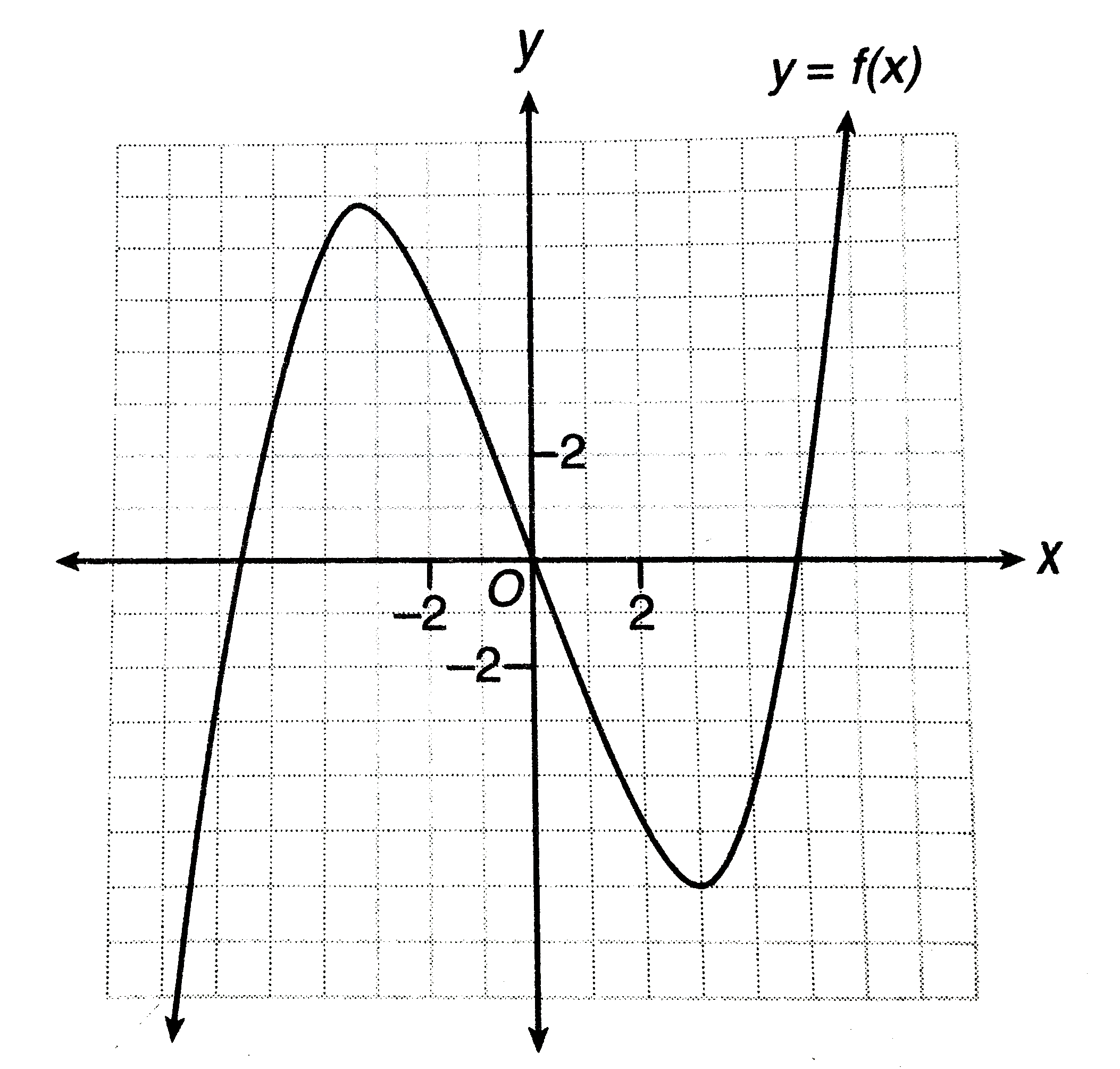Let f(x)=2|x|−1x−3
Range of the values of 'k' for which f(x)=k has exactly two distinct solutions:
(−2,13)
(−2,1]
(0,23]
(−∞,−2)
The correct Answer is:A
To find the range of values of k for which the equation f(x)=k has exactly two distinct solutions, we start with the function:
f(x)=2|x|−1x−3
Step 1: Analyze the function
The function f(x) is defined for all x except x=3 (where the denominator becomes zero). We need to analyze the behavior of f(x) as x approaches 3 and also as x approaches positive and negative infinity.
Step 2: Find the limits
1. As x→3+:
f(x)→+∞
2. As x→3−:
f(x)→−∞
3. As x→+∞:
f(x)→2
4. As x→−∞:
f(x)→−2
Step 3: Determine the critical points
Next, we need to find where the function changes behavior. We can find the derivative f′(x) to determine the intervals of increase and decrease.
Case 1: x≥0
For x≥0:
f(x)=2x−1x−3
Calculating the derivative:
f′(x)=(2)(x−3)−(2x−1)(1)(x−3)2=2x−6−2x+1(x−3)2=−5(x−3)2
Since f′(x)<0 for x>3, f(x) is decreasing for x>3.
Case 2: x<0
For x<0:
f(x)=−2x−1x−3
Calculating the derivative:
f′(x)=(−2)(x−3)−(−2x−1)(1)(x−3)2=−2x+6+2x+1(x−3)2=7(x−3)2
Since f′(x)>0 for x<3, f(x) is increasing for x<3.
Step 4: Identify the range of f(x)
From the analysis:
- As x→−∞, f(x)→−2.
- As x→3−, f(x)→−∞.
- As x→3+, f(x)→+∞.
- As x→+∞, f(x)→2.
Thus, the range of f(x) is (−2,2).
Step 5: Determine the values of k
For f(x)=k to have exactly two distinct solutions, k must be within the range of f(x) but not equal to the endpoints, which means:
−2<k<2
Final Answer
The range of values of k for which f(x)=k has exactly two distinct solutions is:
(−2,2)
The function f(x) is defined for all x except x=3 (where the denominator becomes zero). We need to analyze the behavior of f(x) as x approaches 3 and also as x approaches positive and negative infinity.
1. As x→3+:
f(x)→+∞
2. As x→3−:
f(x)→−∞
3. As x→+∞:
f(x)→2
4. As x→−∞:
f(x)→−2
Next, we need to find where the function changes behavior. We can find the derivative f′(x) to determine the intervals of increase and decrease.
For x≥0:
f(x)=2x−1x−3
Calculating the derivative:
f′(x)=(2)(x−3)−(2x−1)(1)(x−3)2=2x−6−2x+1(x−3)2=−5(x−3)2
Since f′(x)<0 for x>3, f(x) is decreasing for x>3.
For x<0:
f(x)=−2x−1x−3
Calculating the derivative:
f′(x)=(−2)(x−3)−(−2x−1)(1)(x−3)2=−2x+6+2x+1(x−3)2=7(x−3)2
Since f′(x)>0 for x<3, f(x) is increasing for x<3.
From the analysis:
- As x→−∞, f(x)→−2.
- As x→3−, f(x)→−∞.
- As x→3+, f(x)→+∞.
- As x→+∞, f(x)→2.
For f(x)=k to have exactly two distinct solutions, k must be within the range of f(x) but not equal to the endpoints, which means:
The range of values of k for which f(x)=k has exactly two distinct solutions is:
Topper's Solved these Questions
- FUNCTION BOOK - VIKAS GUPTA (BLACK BOOK) ENGLISHCHAPTER - FUNCTION EXERCISE - MATCHING TYPE PROBLEMS
6 Videos
- FUNCTION BOOK - VIKAS GUPTA (BLACK BOOK) ENGLISHCHAPTER - FUNCTION EXERCISE - SUBJECTIVE TYPE PROBLEMS
33 Videos
- FUNCTION BOOK - VIKAS GUPTA (BLACK BOOK) ENGLISHCHAPTER - FUNCTION EXERCISE - ONE OR MORE THAN ONE ANSWE IS/ARE CORRECT
23 Videos
- ELLIPSE BOOK - VIKAS GUPTA (BLACK BOOK) ENGLISHCHAPTER - ELLIPSE EXERCISE - Exercise-4 : Subjective Type Problems
2 Videos
- HYPERBOLABOOK - VIKAS GUPTA (BLACK BOOK) ENGLISHCHAPTER - HYPERBOLAEXERCISE - Exercise-4 : Subjective Type Problems
3 Videos
Similar Questions
Knowledge Check

16-18 The graph of polynomial function f is shown above.
Q.What is the greatest integer value of k for which f(x)=k has exactly 3 real solutions?A−5B0C6D7
Let f(x)=sin−1x−cos−1 x, then the set of values of k for which of |f(x)|=k has exactly two distinct solutions is :
View SolutionMinimum integral value of k for which the equation ex=kx2 has exactly three real distinct solution,
View SolutionFind the minimum integral value of k for which the equation ex=kx2 has exactly three real distinct solutions.
View SolutionIf |x−1|+|x−2|+|x−3|=k,xεR then value of k for which given equation has exactly one solution.
View SolutionFind the values of k for which f(x)=kx3−9kx2+9x+3 is increasing on R .
View SolutionLet f(x)=x+2|x+1|+2|x−1|. Find the values of k if f(x)=k
(i) has exactly one real solution,
(ii) has two negative solutions,
(iii) has two solutions of opposite sign.
View SolutionLet f(x)=x+5√x2+1, then the smallest integral value of k for which f(x)≤k∀x∈Ris
View Solution
